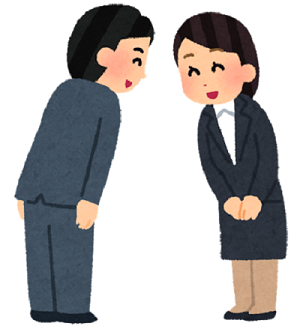
日本語を勉強する中で難しいことは沢山あると思います。例えば「ひらがな」「カタカナ」「漢字」「ローマ字」があると同時にそれらが同じ文章内で混在する点や、同じ発音でも意味が違う言葉がたくさんありますし、男性と女性では話し方が違います。さらに日本語を難しくしているのが「敬語」ではないでしょうか。目上の人、年上の人、先生や先輩などには敬語を使います。この敬語が日本人でも難しいのです。
敬語は、自分の意見を直接相手に伝えるのではなく、相手の気持ちを確認しながら話す話し方です。また、日本の社会では目上の人に対する配慮なのです。日本語を勉強する場合は敬語にも目を向けてください。
Keigo
Many things are difficult when studying Japanese. For example, there are hiragana, katakana, kanji, and romaji. On top of that, they are all mixed in the same sentence. There are many words with the same pronunciation but different meanings, and men and women speak differently. What makes the Japanese language even more difficult is "Keigo". We use honorific expressions for superiors, teachers, seniors, and so on. This honorific language is difficult even for Japanese people.
The term “tame-guchi" is used to describe a word used by friends without consideration or discretion. The end of a sentence such as "〜〜da yo ne" "〜〜da ze" and "〜〜da wa" are tame-guchi and should not be used with superiors.
Keigo is a prefectural way of speaking that confirms the other person's feelings, rather than directly telling that person your opinion. Also, it is an important consideration for superiors in Japanese society. When studying Japanese, please pay attention to Keigo.
sign up for the Japanese-Online Newsletter
__..-・**・-..__..-・**・-.._ あいうえお かきくけこ さしすせそ たちつてと なにぬねの はひふへほ まみむめも やいゆえよ らりるれろ わゐうゑを ん __..-・**・-..__..-・**・-.._
Japanese-Online offers a complete Japanese video course
only $14/month!
Learn more at Japanese-Online.com
__..-・**・-..__..-・**・-.._ あいうえお かきくけこ さしすせそ たちつてと なにぬねの はひふへほ まみむめも やいゆえよ らりるれろ わゐうゑを ん __..-・**・-..__..-・**・-.._
#JapaneseOnline #LearningJapanese #FreeJapaneseLessons #JapaneseVideoLearning #JapaneseAnime #Anime #JapaneseFood #Bloguru
